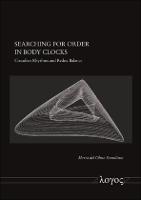Searching for Order in Body Clocks
Circadian Rhythms and Redox Balance
Author(s)
Olmo, Marta del
Collection
Knowledge Unlatched (KU)Language
EnglishAbstract
Physiological rhythms are central to life. Mammalian behavior and metabolism are organized around the day and night by the regulated action of cell-autonomous clocks that exist throughout our bodies. At the core of this molecular clockwork are multiple coupled feedback loops that generate sustained circadian rhythms in gene expression to ultimately orchestrate mammalian physiology. In this work we provide evidence for the role of metabolism in regulating the core clock. We present genes involved in energetic and redox pathways which we identified to be essential for the robustness of cellular timekeepers to temperature fluctuations. We developed the first computational model for circadian redox oscillations that contributes to the understanding of how cellular redox balance might adjust circadian rates in response to perturbations and convey timing information to the core molecular oscillator. Moreover, we show that our mathematical model can be coupled with prior published models of the transcriptional clockwork resulting in 1:1 entrainment. This experimental-theoretical approach exemplifies the need of a dynamic analysis at the system level to understand complex biological processes and provides insights into how basic timekeeping mechanisms are integrated into cellular physiology. Such knowledge might highlight new ways by which functional consequences of circadian timekeeping can be explored in the context of human health and disease.
Keywords
Health & Fitness; SleepDOI
https://doi.org/10.30819/5406ISBN
9783832554064Publisher
Logos Verlag BerlinPublisher website
https://www.logos-verlag.com/Publication date and place
2021Imprint
Logos VerlagClassification
Coping with / advice about personal, social and health topics


 Download
Download